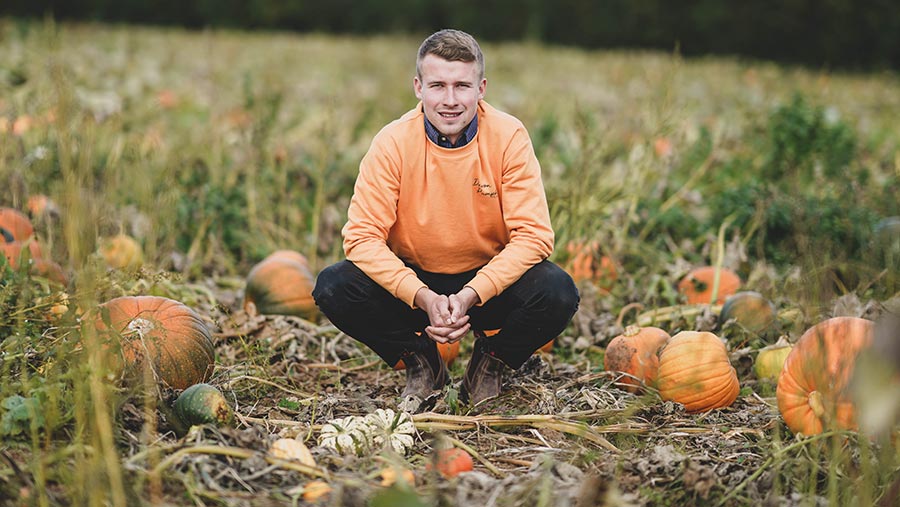Farmer Focus: Pumpkin harvest and improving headlands
 Richard Harris © Emily Fleur
Richard Harris © Emily Fleur October brings us to the final harvest of the year, pumpkins. It is likely to be the lowest-yielding and poorest crop we’ve grown, predominantly due to the July drought, which hampered flowering and fruiting sites.
It seems the squash fared better this season, and they’ve produced a beautiful range of vibrant colours and shapes, albeit smaller than last year.
Not only did the drought reduce the yield and size of the crop, it also saw crops attacked by a severe mildew infection which the plant could not fight off.
See also: Dairy herd introduction leads to better crop profit margins
It was deemed too late to control with a fungicide as the runners had covered the gaps between the rows, but it’s something we must consider next year.
Fortunately, the mid-August rains saved what fruits the plants did set, giving us enough to open for the Halloween season.
The lessons we learned last year enabled us to have a smooth opening weekend, with plenty of excitable children and adults pushing wheelbarrows around the patch.
The weather for our opening weekend was kind, which softened the blow a little. We hope for a settled half term holiday to finish the campaign before a little lie-down in November.
On the arable side of the farm, I’ve had some results back from our headland versus infield soil sampling, in the quest to increase our headland yields.
It turns out the headland pH, phosphorus, potassium and magnesium are about 10-15% lower than the rest of the field, which seems significant, but results were still good enough not to compromise yield to the extent the yield maps are suggesting. The quest goes on.
Like most, the wheat and barley were drilled in near-perfect conditions, with a fantastic, friable seed-bed.
The two barley yellow dwarf virus winter barley varieties we are trialling – Sensation and Feeris – are in the ground in a split field, individual fields and blend trial.
Both are conventional six-rows with good agronomic credentials, so I am looking forward to monitoring their progress over the season.


